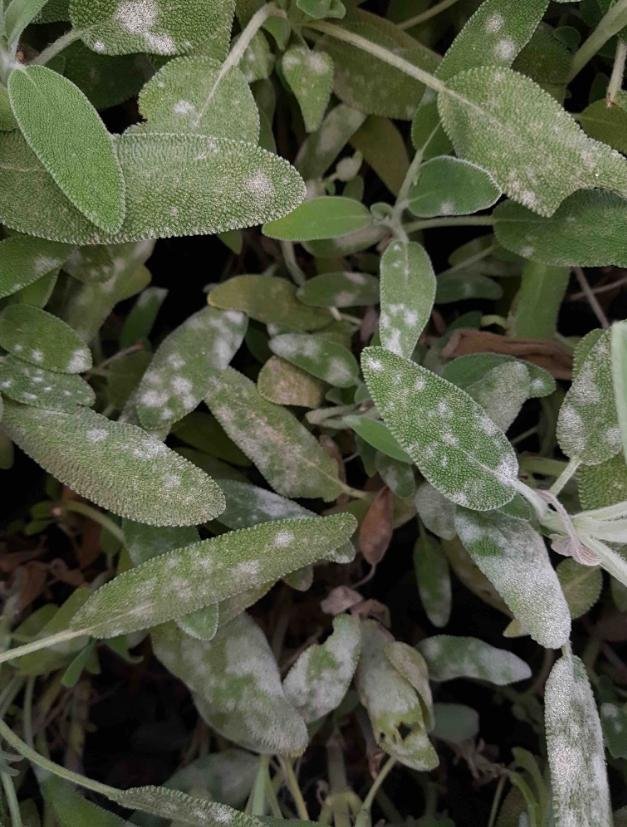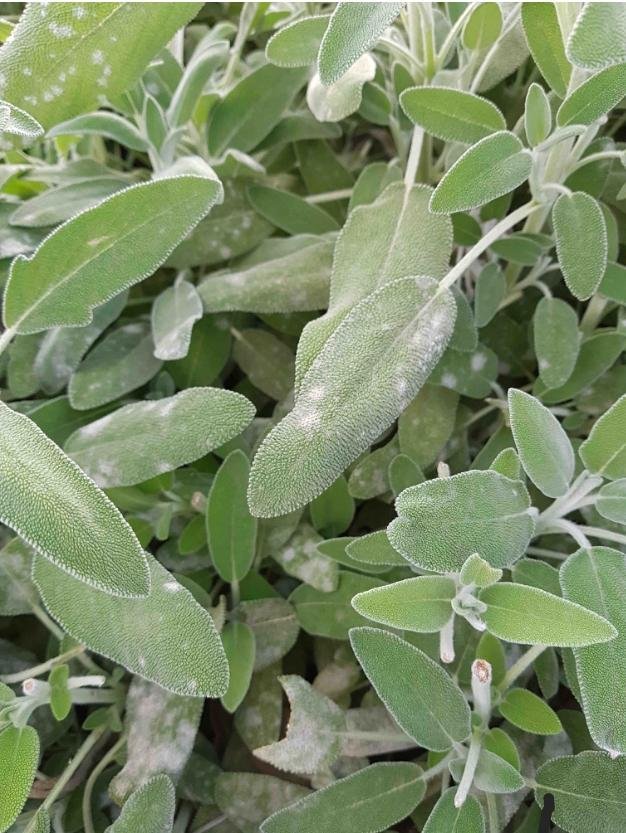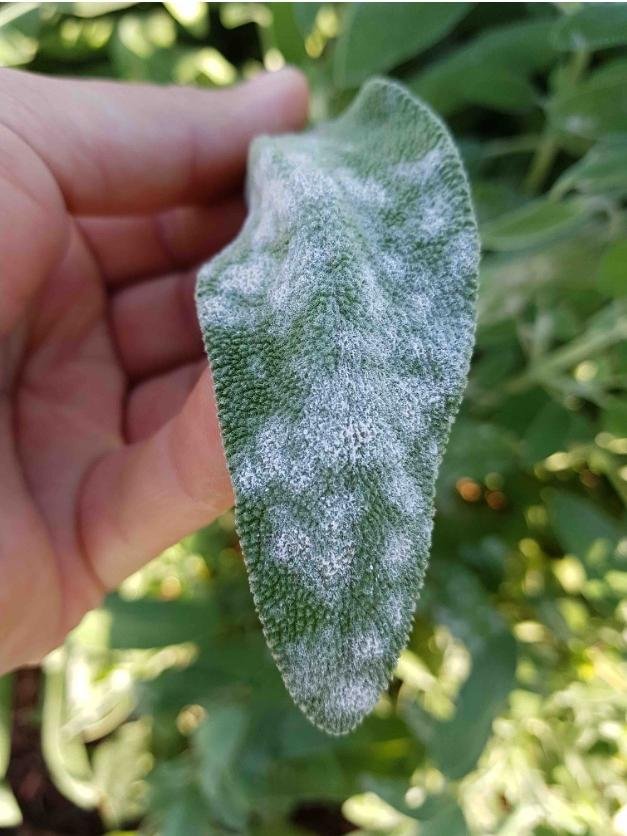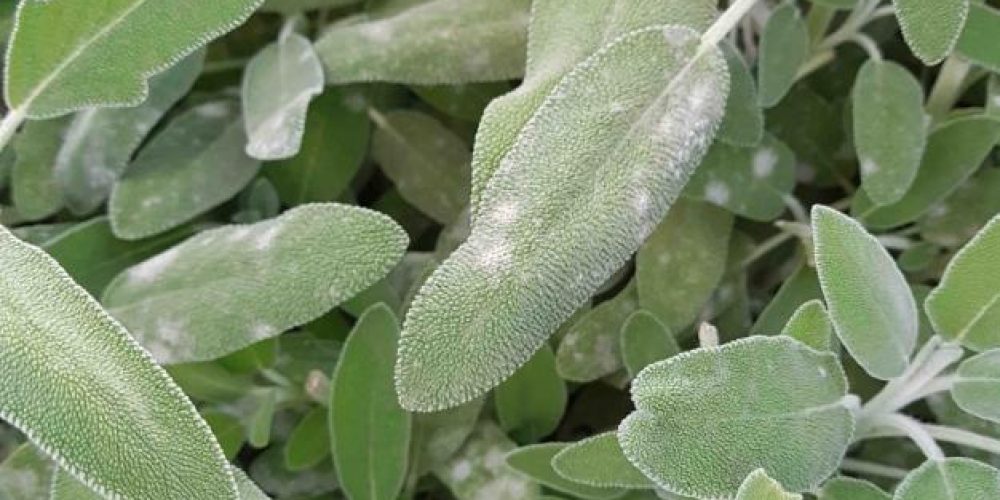Table of contents of the article
Toggle
Powdery mildew on Sage is a fungal disease that greatly affects the sage plant, impairing its growth and quality. And in this article on your site botanist WORLD of PLANTS, we will dwell on the causes of this disease, its symptoms, methods of prevention and treatment to ensure the health of sage plants.
What is powdery mildew on Sage
- Common name: powdery mildew in Sage
- Scientific name: various types of rank Erysiphales
- Type: fungal
Powdery mildew on Sage is a fungal disease that is widespread all over the world and usually appears on the surface of the leaves in the form of white or gray spots with a powdery texture, hence the name.
In general, the disease is host-specific, which means it can only infect plants of the same genus or family, powdery mildew prefers a warm climate, moderate to high humidity, low light conditions and does not require the presence of free-standing water. And powdery mildew can cause significant losses due to the extraction of nutrients, reduced photosynthesis, increased respiration and transpiration, poor aesthetics, and generally slower growth rates in Sage.

Prevention measures for powdery mildew disease on Sage
It is easier and more cost-effective to overcome the infection by controlling powdery mildew during its initial stage. Make it a routine to regularly monitor the field and look for the presence of powdery mildew weekly.
In most cases, it is beneficial that the powdery mildew is generally specific to the host; there is little concern in relation to neighboring crops that have been neglected. However, it is important to remove all debris from the outbreak. Otherwise, it can affect the sage plants the following season. There are many powerful commercial fungicides and the amount of vaccine generated by last year's outbreak is of great importance. Simple sanitation measures are an important step and should be the basis of plant protection programs.
Traditional (chemical) methods of combating powdery mildew disease on Sage
Differences in the dynamic nature and behavior of powdery mildew exist on different families. Growers and consultants tend to have their own treatment methods, different methods, fungicide preferences and secret tricks. However, there is still some consensus: prevention, alternation, the use of several fungicides, each of which belongs to a different group of chemicals.
Effective control requires spraying with high pressure and a large amount of water; good coverage is of the essence. A static or dynamic schedule for applying spraying is a common strategy. Below is a list of generic names of fungicides used in one or more parts of the world, they are classified into groups according to the mode of action:
Series 1: Benconazole, triadimenol, tebuconazole, miclobutanil, tetraconazole, propiconazole, prochloraz, cyproconazole, diphenoconazole, vinbuconazole, and triflumizole.
Series 2: Azoxystrobin, peraclostrobin, trifluoxystrobin, and methyl chrysoxime
Series 3Products : sulfur, copper sulfate, bicarbonate, mineral oil, neem oil, detergents, SOAP-based products
- Sulfur can cause injury to foliage and fruits when used on days when the temperature is above 32 degrees Celsius. Do not use it within two weeks of using the oil.
- If powdery mildew is present, but symptoms have not appeared, consider spraying fungicides once every 14 days. Products with the same active ingredient in successive treatments are used only in Group 3, since there are no restrictions there.
- Use fungicides belonging to different groups to prevent powdery mildew from developing resistance to certain chemicals. It is important to remember that if powdery mildew develops resistance to fungicides within the group, then most likely the pathogens will be resistant to all members of that group (except Group 3).
- Some commercial fungicides have two active ingredients and two modes of action. After using these products, keep in mind that now you have two sets that you have already used. So, be sure to exclude these two active ingredients in the next application.
Organic methods of combating powdery mildew disease on Sage
Sulfur (dustable, wettable, Flowable, or Micron) and potassium bicarbonate can be used .
Biological methods of combating powdery mildew disease on Sage
Bacillus pumilis and Bacillus subtilis.
Note: caution and careful observation should be exercised when using any plant protection products (insecticides, fungicides, herbicides). It is the sole responsibility of the farmer to keep track of the legal uses and permissions in relation to the laws in his countries and destination markets. Always read the instructions written on the labels and, in case of a discrepancy, act according to the product label.
Note: keep in mind that the information written on the label usually applies to local markets. Pest control products intended for organic farming are generally less effective compared to conventional products. When dealing with organic, biological, and to some extent a small number of conventional chemical products, the complete eradication of a lesion or disease will often require numerous repetitions of a specific treatment or a combination of treatments.
In conclusion, we would like to note that we, at the world of plants website, offer you all the necessary services in the world of plants, we provide all farmers and those interested in plants with three main services::-
- Artificial intelligence consulting service to help you identify diseases that affect plants and how to deal with them.
- Blog about plants, plant diseases and care of various crops ... You are currently browsing one of her articles right now.
- An application that provides agricultural consultations to clients, as well as a service for imaging diseases and knowing their treatment for free – Click to download the Android version from Google Play Store، Click to download the IOS version from the Apple App Store.





